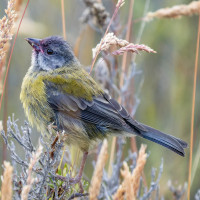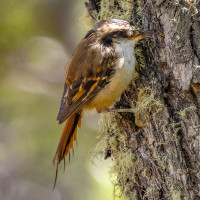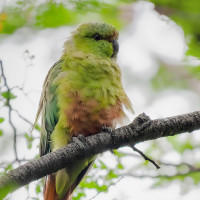Descrição
Los Arrayanes National Park covers the Quetrihué Peninsula on the shore of the Nahuel Huapi Lake. Los Arrayanes was created in 1971 to protect its forest of rare arrayán trees. Some arrayán trees (Luma apiculata) are over 600 years old. You can explore the park through the 11 km trail (one way) that crosses the entire national park to the tip of the peninsula. The forest with these cinnamon-coloured arrayán trees is beautiful and the path is well maintained.
Los Arrayanes is ideal to look for birds of the Patagonian Andean forest such as Thorn-tailed Rayadito, White-throated Treerunner, Ruby-topaz Hummingbird, Patagonian Sierra-Finch, Gray-hooded Sierra-Finch, Chilean Flicker, Austral Parakeet and Dark-bellied Cinclodes. But many more birds interesting can be observed, see the birdlist below.
Detalhes
Acesso
Los Arrayanes National Park is located on the Quetrihué Peninsula on the shore of the Nahuel Huapi Lake. From the small village of Villa La Angostura the peninsula stretches well into the large lake of Lago Nahuel Huapi. A wide trail runs through it from the entrance in the outskirts of Villa La Angostura to the very tip. A passenger boat runs from the town port, and the ride is about 55 minutes to the dock at the far end of the peninsula. From here it is an 11 km walk back to town. This path, full of ups and downs, is well maintained and runs partly over wooded boardwalks.
Los Arrayanes can also be visited by taking a catamaran or ferry from the port in San Carlos de Bariloche and Victoria Island. Please note that the last entrance to this route is at 11 am in the winter months (as the trail is long and it is advisable to finish it before dark).







